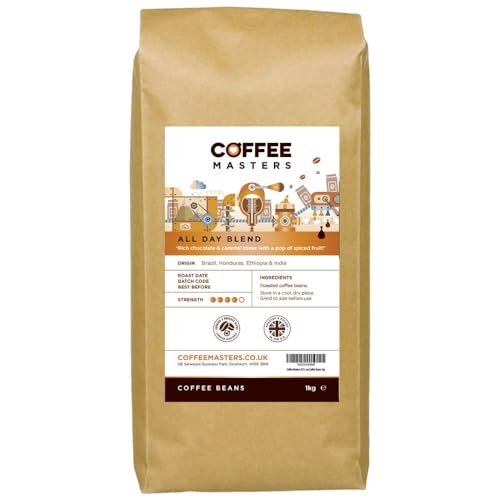How You Can Use A Weekly Coffee Bean Project Can Change Your Life

What Are Coffee Beans?
The coffee beans you use to brew are actually seeds from the coffee cherry. The coffee plant is perennial, which means it will return year after year.
Consuming coffee beans in moderation is recommended since they are high in caffeine and other substances. Learn more about this popular seed.
Origin
Coffee is a beverage made from the seeds that have been roasted (beans) of the coffee plant. The beans are among the most sought-after and lucrative international commodities. The coffee plants are evergreen, woody shrubs that thrive in tropical climates. Most of the world's coffee is produced in the Bean Belt, which includes the areas around the Tropic of Cancer and the Tropic of Capricorn.
The most popular legend of coffee's genesis starts with a goat herder named Kaldi in Ethiopia. He observed that his flock became especially active after eating the bright red berries of some coffee plants. Kaldi shared his discovery with the abbot of a nearby monastery who brewed a drink using the berries. From there, the energetic effect of the berries was spread.
Presently coffee beans are produced by two major varieties of Coffea plants: Arabica and Robusta. The latter is found primarily in Africa and Indonesia and is typically cheaper than arabica. There are also smaller varieties that are a combination of robusta and arabica. These beans are known as peaberries and have more flavor than regular beans.
While roasting, beans can lose moisture, which could lead to them becoming bitter or stale. top rated coffee beans is important to only make use of fresh, premium beans for your coffee.
Flavor
The bean's type, temperature and processing method can affect the four components of taste - bitterness and acidity along with sweetness and saltiness. The degree of these elements can produce a variety of flavor profiles ranging from sweet and fruity to nutty and even smoky.
When coffee beans are exposed to heat, they react with amino acids inside the seed, creating hundreds of unique aromatic compounds that impact their flavor profile. This process is known as the Maillard Reaction and it is the same chemical reaction that occurs in virtually every cooking. The result is that the aroma of coffee that has been roasted is a reflection of those chemical compounds.
The Maillard Reaction is responsible for the overall flavor, however volatile and nonvolatile substances also play a role in the taste of coffee. Unroasted or green beans can be a bit fruity, floral or earthy. Bitterness is typically associated with full-bodied roasts that contain more caffeine, but it could also be because of improper brewing techniques or storage.
Flavored coffee beans are coated with flavor oils that help to preserve the beans, while also adding distinct aroma and taste. These oils that are flavored can be mixed with chemicals and natural flavors, like cinnamon, vanilla and chocolate. The flavors attach to the beans by using an extremely chemical compound known as polyphenol.
Health Benefits

Coffee beans are a good source of potassium, magnesium and B vitamins. They also provide a valuable source of antioxidants, which help prevent oxidative stresses (which can cause chronic diseases like cancer and atherosclerosis). The antioxidant chlorogenic acids in coffee beans are especially effective against obesity-related ailments like diabetes or high cholesterol levels.
Coffee is a natural boost of energy that helps people feel more alert. Its caffeine boosts neurochemicals within the brain, which improve the vigilance and memory, improves cognitive function and aids in controlling blood sugar levels within the body. Studies have found that moderate consumption of coffee can help reduce the risk of Parkinson's disease and dementia, and also improve mood, contentment as well as energy and concentration.
Anti-aging The antioxidants (including caffeine and the chlorogenic acids) in coffee are a natural moisturizer for the skin, boosting cell turnover to reduce wrinkles and fine lines. They also provide UV-protection blocking light and preventing sun damage to skin.
Anti-depressant - Coffee beans are a natural anti-depressant. They boost serotonin levels and dopamine levels in the brain, thereby increasing the amount of happy hormones. It can also relieve inflammation and pain, acting as a natural painkiller, and enhancing the effectiveness medical painkillers. Cafestol and Kahweol are diterpene esters compounds that possess lipolytic properties. They can help reduce cellulite.
Caffeine
Coffee is a drink that is popular across the globe. It has become an integral part of many morning routines. Coffee beans are the seeds of the coffee plant, or the coffee cherry. They contain caffeine, which is a natural stimulant. The caffeine in coffee can differ based on the method by which the bean is processed, roasted, and prepared. But, there are basic guidelines regarding the amount of caffeine in every coffee bean that will allow you to make informed choices when selecting your joe.
The average coffee bean is approximately 2 milligrams per bean. However, the exact amount can differ depending on its size and the intensity at which it has been roasted. There is a popular belief that dark roasts have more caffeine in them than light roasted ones, but this is not the reality. Dark roast coffee beans will have less caffeine than light roasts because of their smaller density. However, the amount of caffeine is the same.
The recommended daily limit for caffeine is 400 milligrams. A typical cup of coffee has 95 milligrams. If you are not sensitive to caffeine staying within this limit shouldn't cause any negative effects. Those who are not sensitive to caffeine can still enjoy their coffee, however it's important to be aware of the amount caffeine you're ingesting and avoid excessive consumption.
